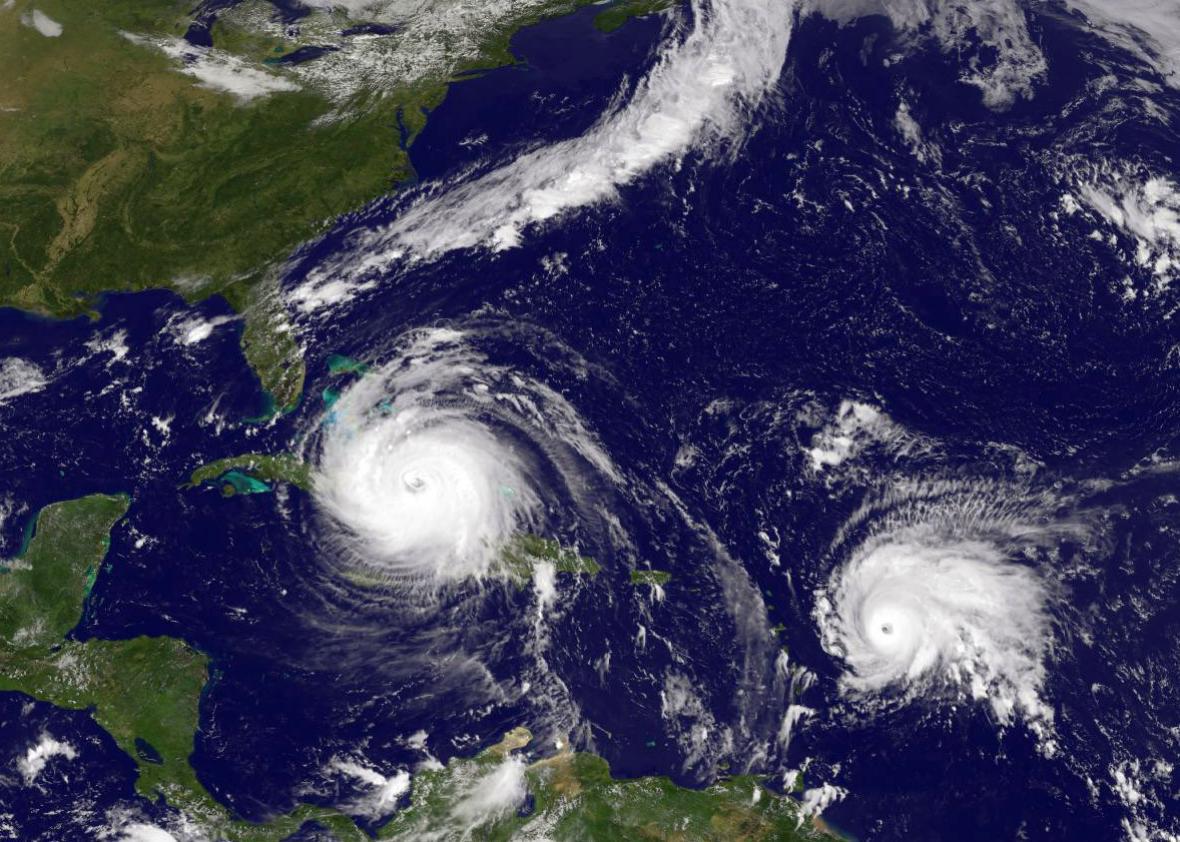This story originally appeared on Newsweek and has been republished here with permission from Climate Desk.
There are officially two hurricanes crossing the Atlantic Ocean: Hurricane Irma, currently pounding toward Florida, and Hurricane Jose, following frighteningly close behind.
As a Category 5 storm, Irma is by far the more dangerous of the pair. The National Hurricane Center is currently predicting the storm will slip past the north coast of Cuba, then hit the tip of the Florida peninsula early Sunday morning.
Currently, meteorologists believe Irma will still be a Category 4 storm—with winds between 130 and 156 miles per hour—when it reaches Florida. Storms typically weaken when they hit land, since they lose contact with the warm water that feeds them.
Forecasters still aren’t sure precisely what path the storm will take from there, which is why the map switches from a solid white cone to a polka-dot cone. The National Hurricane Center says that its average error for predicting a storm’s path five days out, at the end of the cone, is about 200 miles.
That means that although there’s currently a strong probability Irma will continue along the East Coast, pounding Georgia and South Carolina, there’s still plenty of time for the storm to swerve.
Following close behind Irma is Jose, which reached hurricane status Wednesday evening along with Katia in the Gulf of Mexico. Jose’s path looks eerily similar to Irma’s, but it shouldn’t have nearly the same impact.
In part, that’s because of its projected path. Currently, the National Hurricane Center is predicting Jose will follow a slightly more northern path than Irma has, a relief for the heavily battered islands that have already been hit by a hurricane this week. Although here, too, the uncertainty about long-term predictions holds true: There’s still time for Jose to change course.
And Jose is still growing. The National Hurricane Center predicted Thursday morning that it would become a major hurricane, Category 3 or higher, and on Friday it was declared a Category 4 storm.
But there’s one tiny bright spot to the Jose story, and it’s actually the result of the hurricane’s close proximity to Irma. While Jose will pack powerful winds, the National Hurricane Center thinks the storm may begin to weaken just a couple days after becoming a major hurricane. That’s because of the messy winds trailing in Irma’s wake, which could interfere with Jose’s own wind structure.
